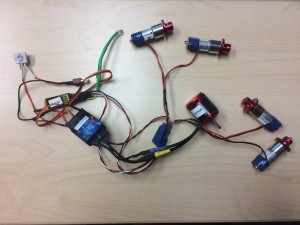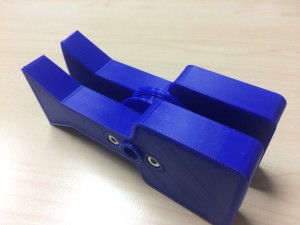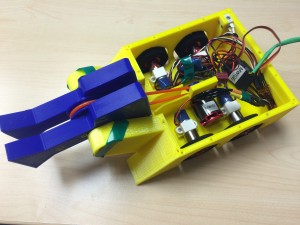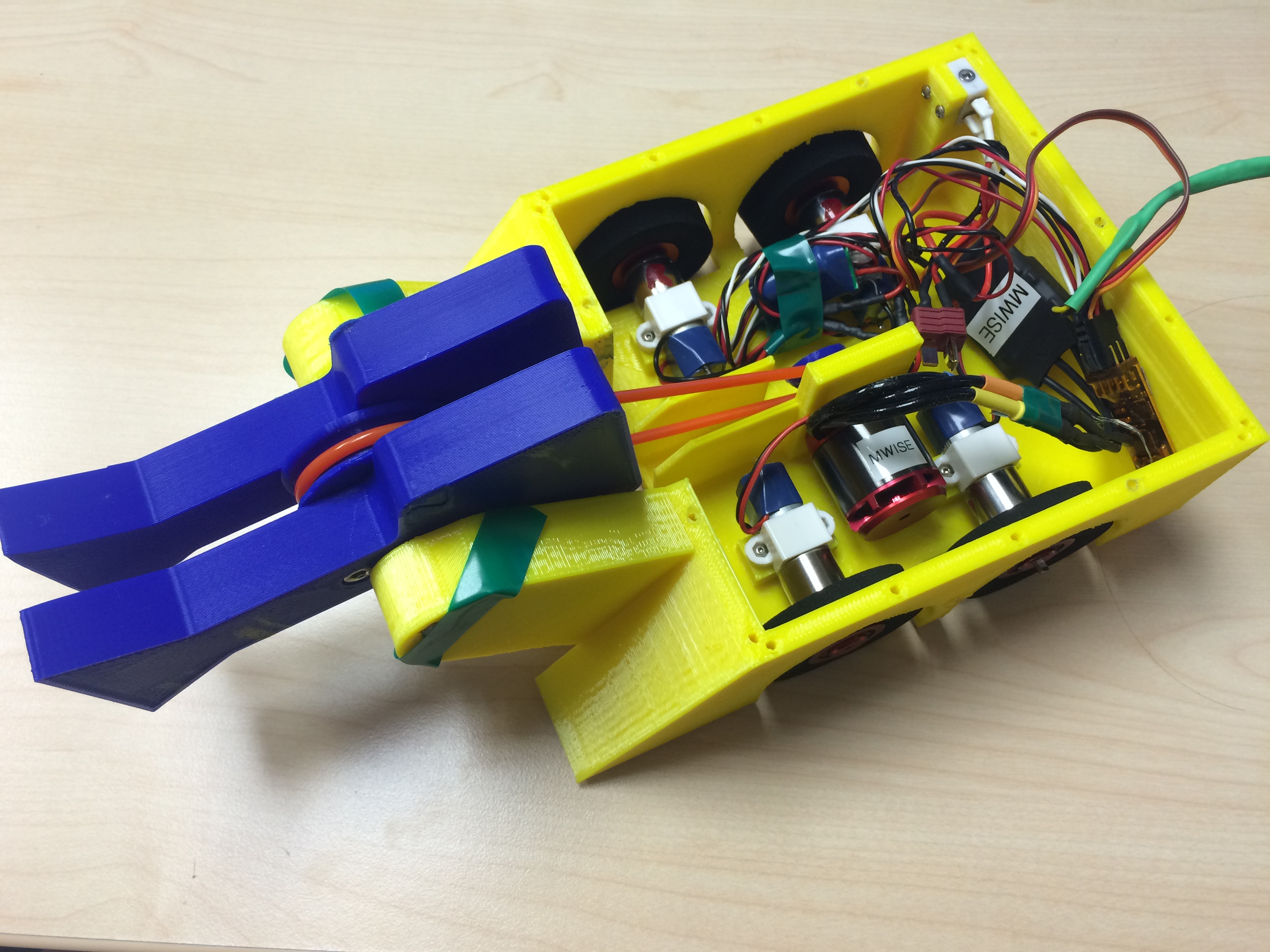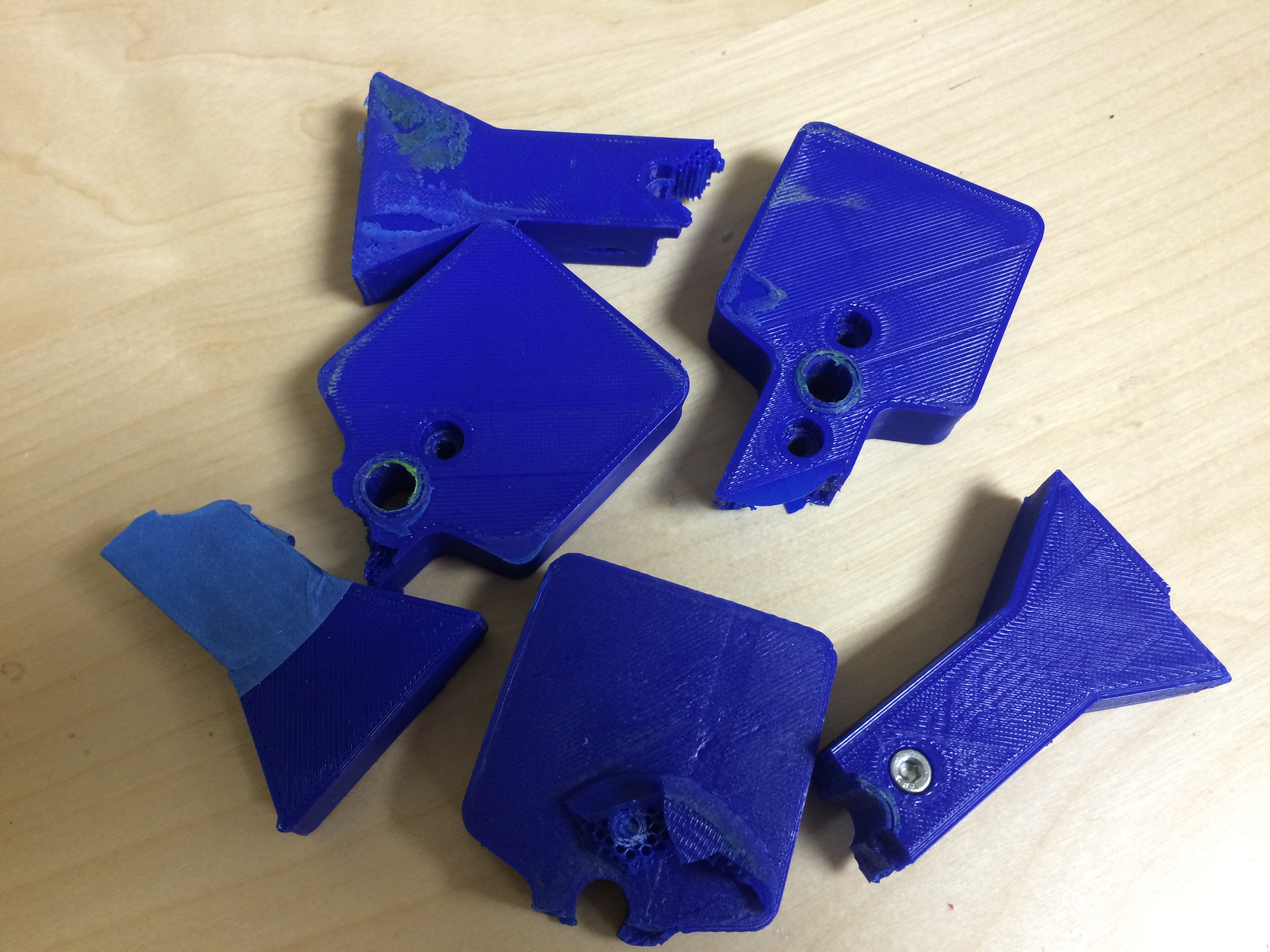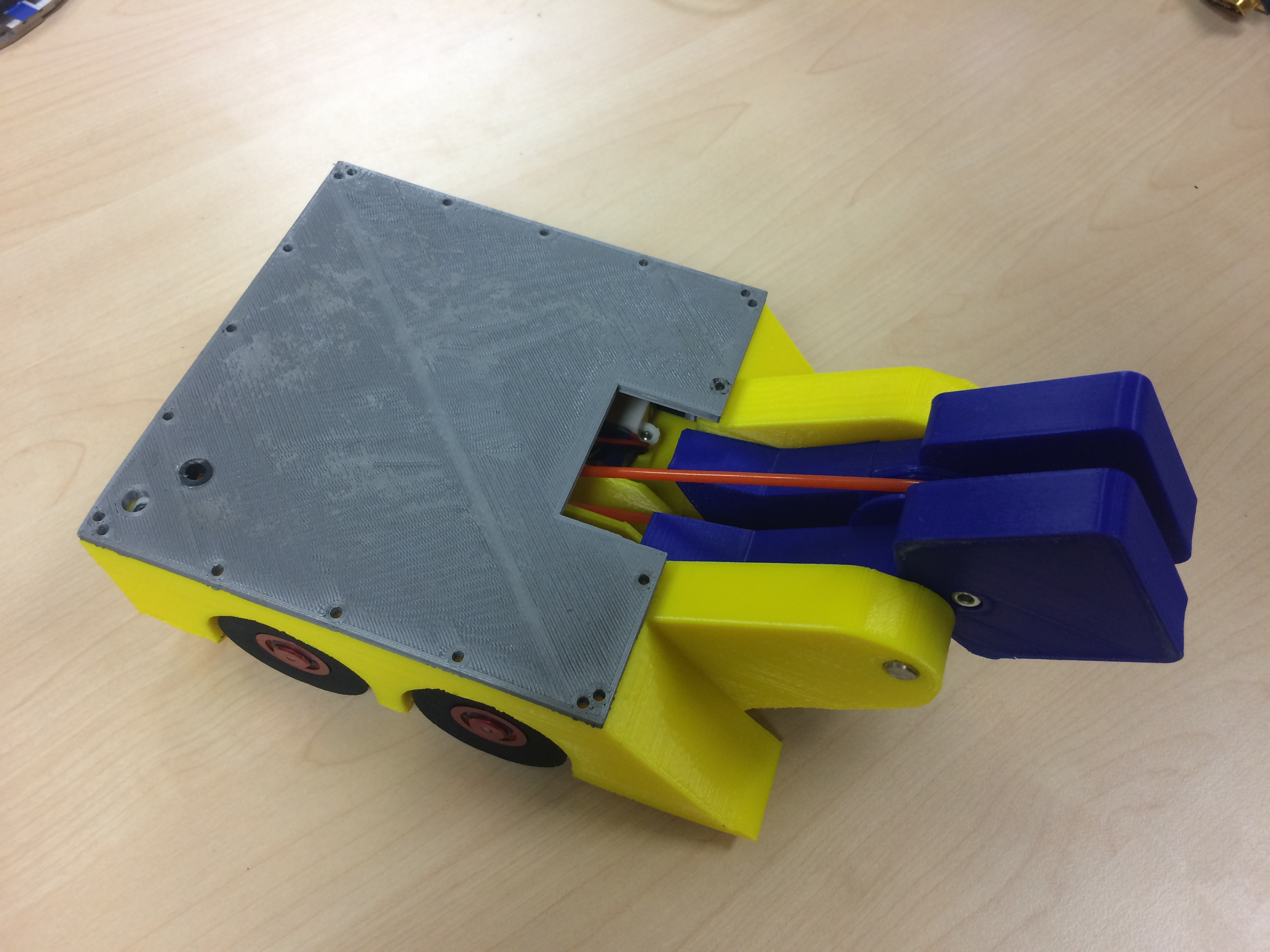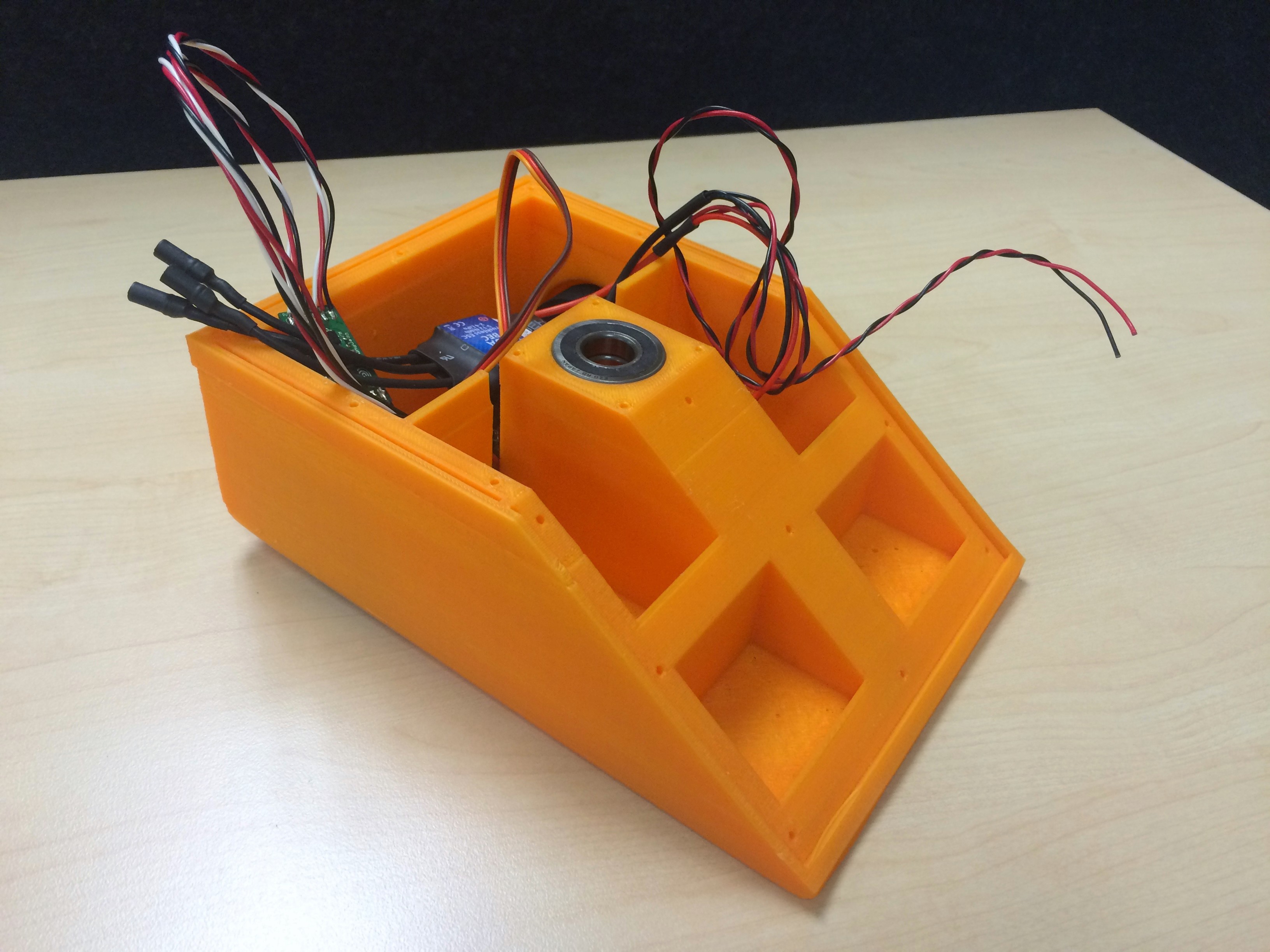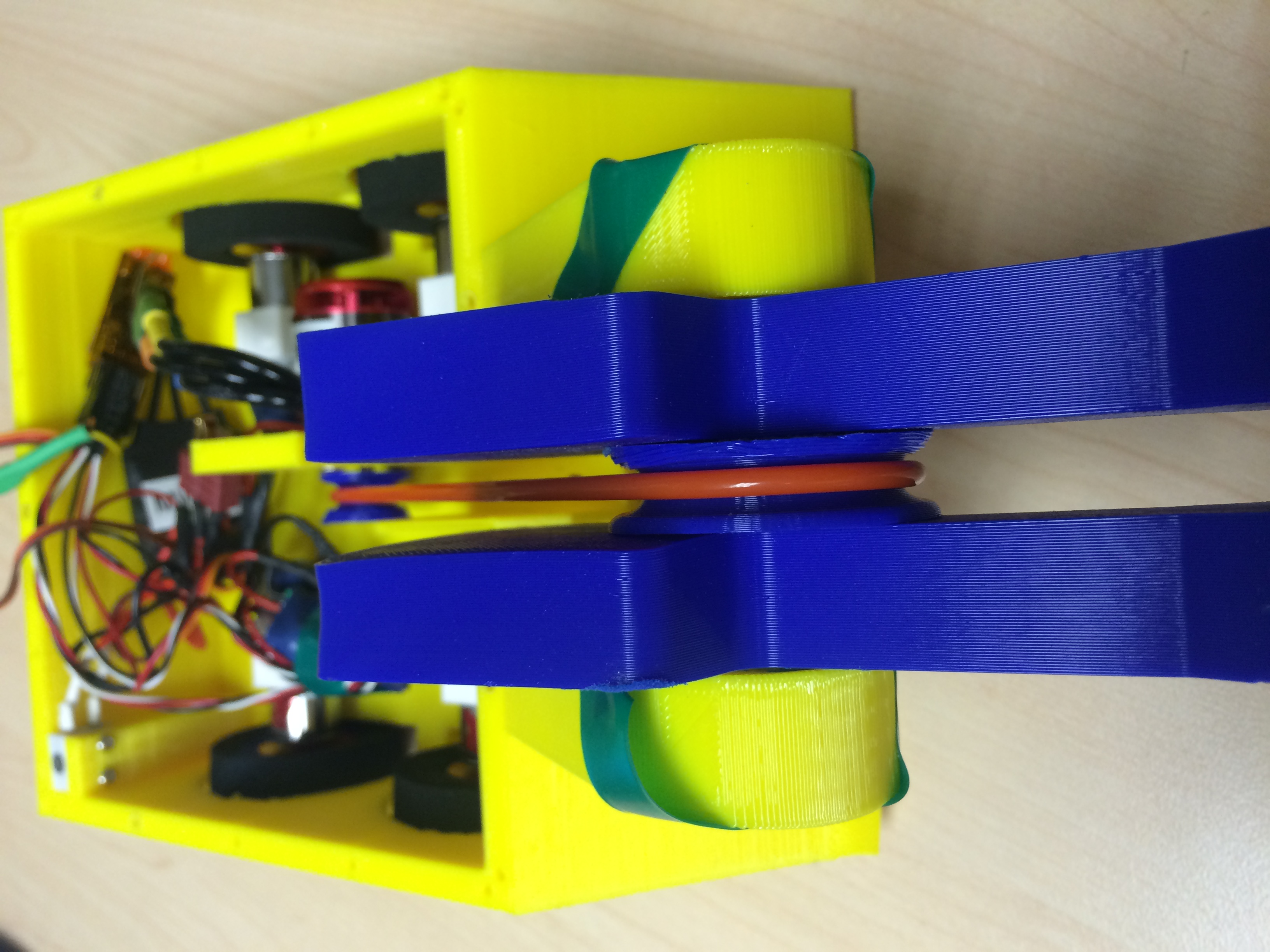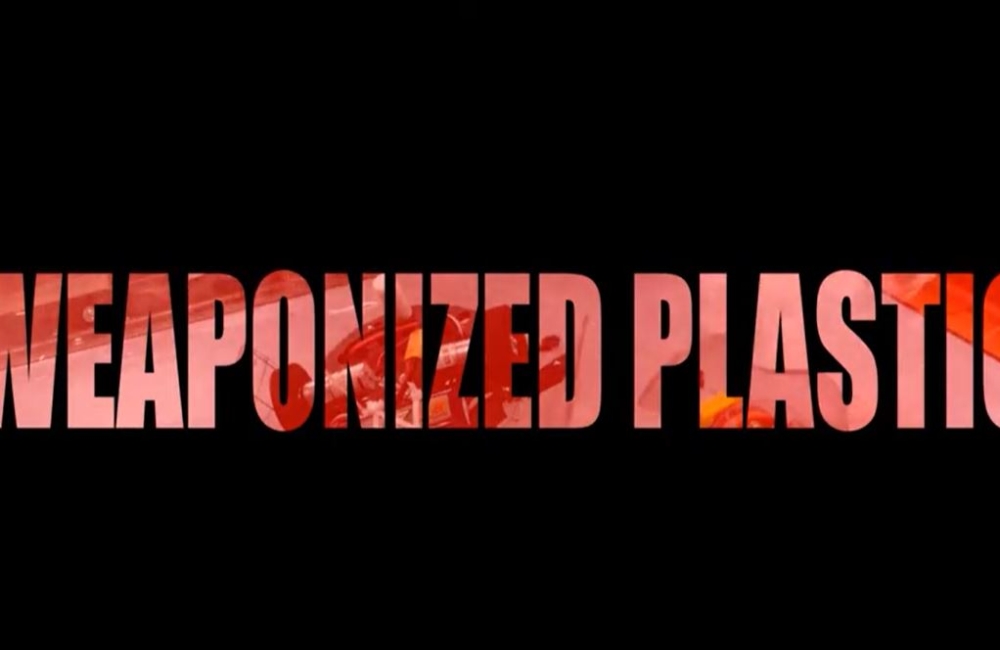In 2015, I decided to try to build battlebots that were partially or completely 3D printed. This was largely done because I had limited amounts of time (a la Unbounded and Fetch Robotics). The first robot I 3D printed, Phoenix Rooster, was not my best battlebot but I decided to go for style points as always. Below are some pictures of Phoenix Rooster from Robogames 2015. One of the challenges with 3D printed robots is getting the tolerances right and getting the bearings and shafts installed without cracking the plastic body. Specifically in Pheonix Rooster I inserted thin titanium plates in the sides of the plastic body of the robot with the hope that this would give the plastic battlebot a fighting chance.

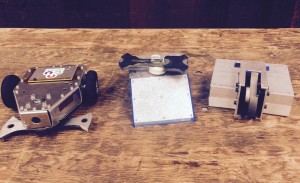
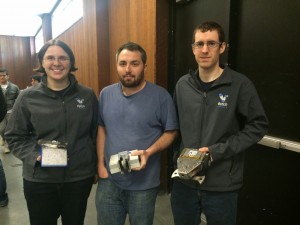
In the spring Fetch Robotics built a battlebot arena for 3lb beetle-weight robots. At Fetch we have a weaponized plastic and full metal leagues, so I went back to the drawing board to create a robot specifically for the plastic league. In this bot I tried to use as few parts as possible this means no bearings or other extra parts that can’t be 3D printed into the plastic uni-body of the robot. Also I went with a uni-body design to reduce the time spent on designing and building the robot which took about a total of 18 hours to design, build, and test before fighting. Below are pictures of the main components of my robot Spinny which took 2nd place in Fetch Fest. The biggest design flaw with all the plastic bots that I have designed so far is that the 3D printed pulleys wear out very quickly and my plan is to switch to a small metal pulley.
